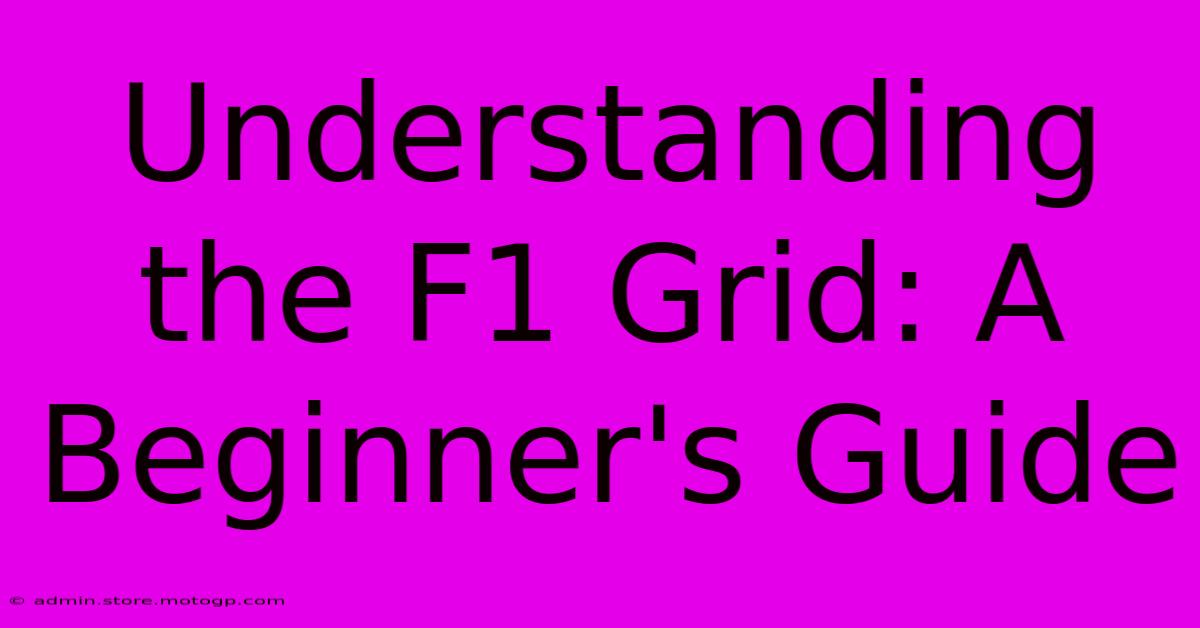Understanding The F1 Grid: A Beginner's Guide

Table of Contents
Understanding the F1 Grid: A Beginner's Guide
For newcomers to the exhilarating world of Formula 1 racing, the starting grid can seem like a confusing jumble of cars and numbers. This beginner's guide will demystify the F1 grid, explaining how it's formed, what it means, and why it's so crucial to the race outcome.
What is the F1 Grid?
The F1 grid is the starting lineup for a Formula 1 race. It's the arrangement of cars on the track just before the lights go out to signal the start. Each car occupies a designated spot, determined by the results of qualifying. Understanding the grid is fundamental to comprehending the strategies and dynamics of an F1 race.
How is the Starting Grid Determined?
The starting grid is decided through a process called qualifying. This separate session, held on Saturday before the race on Sunday, determines the positions of each driver on the grid. Qualifying is split into three segments:
Q1 (First Qualifying Segment):
- All 20 drivers participate.
- The slowest five drivers are eliminated after this session.
Q2 (Second Qualifying Segment):
- The remaining 15 drivers continue.
- Another five drivers are eliminated.
Q3 (Third Qualifying Segment):
- The fastest ten drivers compete for pole position.
- The driver with the fastest lap time secures pole position, the coveted first spot on the grid. The remaining drivers fill the remaining spots in order of their lap times.
The Importance of Grid Position
Starting position significantly impacts the race. A front-row start, particularly pole position, offers a considerable advantage. Drivers starting further back face challenges like:
- Overtaking Difficulty: Overtaking in F1 is notoriously challenging, particularly on tracks with limited opportunities for passing.
- Traffic: Drivers further down the grid contend with more traffic, making it harder to maintain pace and potentially leading to collisions.
- Tire Strategy: The risk of damage and tire wear is higher when battling for position.
Grid Penalties and Their Impact
Sometimes, drivers can receive grid penalties due to rule infractions, which affect their starting position. These penalties can range from dropping several spots to starting from the pit lane. This element adds another layer of complexity and often changes the pre-race predictions.
Beyond the Starting Positions: Understanding Grid Strategy
The grid isn't just about the starting positions; it influences strategic decision-making. Teams analyze their position, the weather, and their competitors' starting positions to plan their racing strategy, including:
- Tire Choice: Starting position can influence the optimal tire strategy for the race.
- Overtaking Opportunities: Teams identify potential overtaking spots based on their starting position and track characteristics.
- Race Pace: Drivers may adopt different race paces depending on their grid position, aiming to conserve tires and fuel.
Conclusion: Mastering the F1 Grid
The F1 grid is more than just a lineup of cars; it's a key component of the race's narrative, reflecting the outcome of qualifying and influencing the unfolding drama of the race. By understanding how the grid is formed and its impact on race strategies, you can gain a deeper appreciation for the complexities and excitement of Formula 1. So, next time you watch an F1 race, pay close attention to the grid – it's the starting point of an exhilarating journey!

Thank you for visiting our website wich cover about Understanding The F1 Grid: A Beginner's Guide. We hope the information provided has been useful to you. Feel free to contact us if you have any questions or need further assistance. See you next time and dont miss to bookmark.
Featured Posts
-
Sting F1 The Drive To Win
Feb 20, 2025
-
Fast Track To The Fun Lot F At Circuit Of The Americas
Feb 20, 2025
-
The Evolution Of Moto Gp Track Safety
Feb 20, 2025
-
Witness The Drama Unfold Malaysia Moto Gp
Feb 20, 2025
-
Moto Gp Racing Time A Celebration Of Speed
Feb 20, 2025
